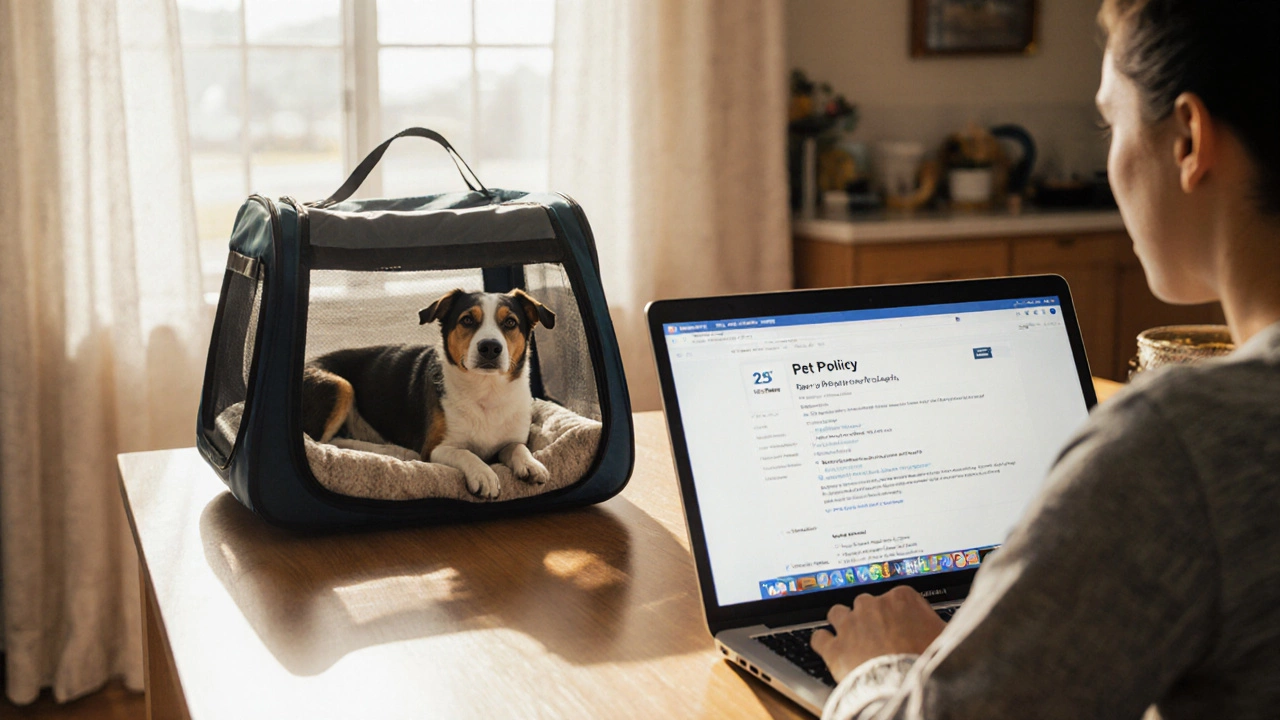Dog Cargo Flight Guide – What Every Pet Owner Should Know
When planning a dog cargo flight, the process of moving a dog in the cargo hold of an aircraft, owners must understand airline rules, health checks, and safety gear. Also known as pet cargo travel, a dog cargo flight is a type of dog air travel that requires a certified travel crate, up‑to‑date vaccination records, and a calm pet mindset. In plain terms, the cargo hold is a pressurised, temperature‑controlled area where dogs travel separate from passengers. Dog cargo flight encompasses three core steps: paperwork, packing, and pre‑flight preparation. First, every airline publishes specific pet carrier requirements—size limits, ventilation standards, and labeling rules. Ignoring these can lead to denied boarding or extra fees. Second, the crate itself must meet IATA (International Air Transport Association) standards; it should be sturdy, large enough for the dog to stand, turn, and lie down, and feature a secure latch. Finally, a dog’s stress level often spikes during cargo trips, especially if the animal has never flown before. This is where dog travel anxiety comes into play: a nervous pup may pant, whine, or even vomit, which can affect its health and the crew’s handling. Understanding these connections helps you turn a daunting process into a manageable routine.
Airline regulations shape every decision you make. For example, most UK carriers require a health certificate issued within ten days of travel, and some insist on a microchip scan before loading. These rules influence crate selection because the crate’s dimensions must fit within the airline’s cargo specifications while still giving the dog enough space to move. If you’re worried about anxiety, consider a few proven tactics: a familiar blanket inside the crate, a short‑term calming supplement approved by your vet, and a pre‑flight walk to burn off excess energy. Many owners also book a direct flight to reduce handling time; each transfer adds another stress point. Remember, the cargo hold maintains a steady temperature, but extreme weather at departure or arrival airports can affect the interior, so verify the airline’s climate control system. By linking regulations, crate standards, and anxiety‑reduction methods, you create a checklist that covers safety, comfort, and compliance in one go.
Below you’ll find a curated collection of articles that dive deeper into each of these areas. From choosing the right crate and decoding airline paperwork to handling travel‑related stress and what to expect on the day of departure, the posts are packed with step‑by‑step guides, real‑world examples, and expert tips. Whether this is your first dog cargo flight or you’re looking to refine an existing routine, the resources ahead will give you the confidence to send your pup on a safe, smooth journey.
Can I Fly with a 25‑lb Dog? Airline Rules, Costs & Practical Tips
Learn if a 25‑lb dog can fly in cabin or cargo, airline policies, fees, required documents, carrier tips, and stress‑reduction tricks for a smooth pet travel experience.
